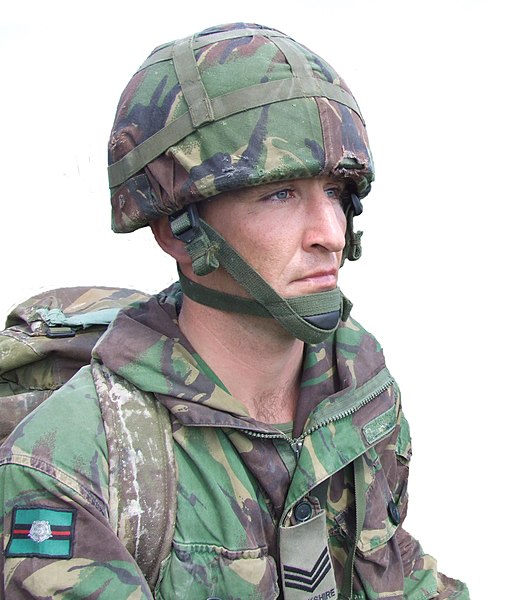The Brodie helmet is a steel combat helmet designed and patented in London in 1915 by Latvian inventor John Leopold Brodie. A modified form of it became the Helmet, Steel, Mark I in Britain and the M1917 Helmet in the US. Colloquially, it was called the shrapnel helmet, battle bowler, Tommy helmet, tin hat, and in the United States the doughboy helmet. It was also known as the dishpan hat, tin pan hat, washbasin and Kelly helmet. The German Army called it the Salatschüssel. The term Brodie is often misused. It is correctly applied only to the original 1915 Brodie's Steel Helmet, War Office Pattern.
A British Mark I helmet dating from 1917. This was a developed version of the original Brodie helmet and was worn by British Empire and US troops.
The Illustrated War News—17 November 1915 The caption reads: Head-wounds have been more than usually numerous during the war, owing to the trench-fighting, and more than usually severe, owing to the extensive use of shrapnel. But the danger, although it cannot be avoided, can be minimised. Our Army has now followed the French by adopting steel helmets, calculated to stop shell-splinters and shrapnel. Even in cases of extreme risk, not only has death been avoided, but injuries have been confined to bruises or superficial wounds. Cases have occurred in which the wearers have been hit, but saved by these helmets from what without them would have meant certain death. The fur coats, as they did last year, mean mitigation of the rigours of winter. The French helmets are known as "Adrians," after their inventor. (Photo by Illustrations Harrow).
The Loyal North Lancashire Regiment showing off their new Brodie helmets (1916).
U.S. Army Infantryman in 1942 wearing a M1917A1 helmet
A combat helmet or battle helmet is a type of helmet. It is a piece of personal armor designed specifically to protect the head during combat. Modern combat helmets are mainly designed to protect from shrapnel and fragments, offer some protection against small arms, and offer a mounting point for devices such as night-vision goggles and communications equipment.
Example of a modern combat helmet (British Mk 6 with cloth cover)





